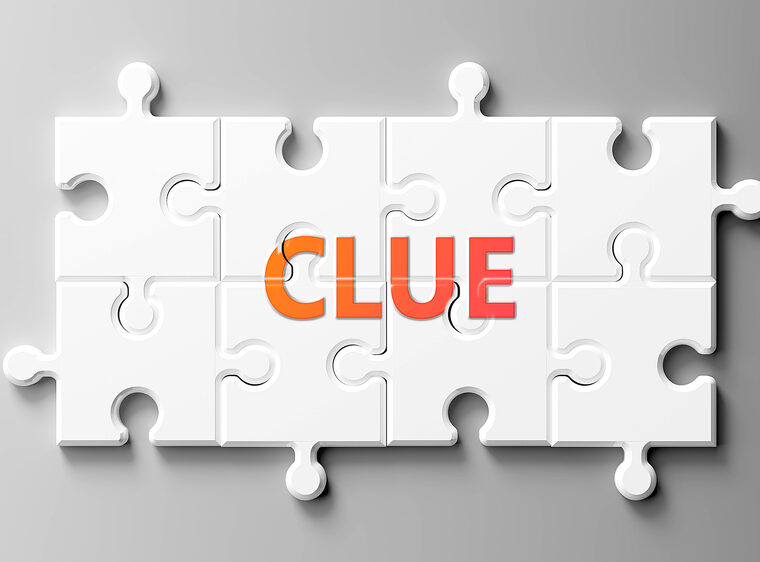
Ugh! Unfamiliar vocabulary in informational texts can be a huge stumbling block for our students. Below are several types of clues you can teach students based on the work of Baumann and colleagues.
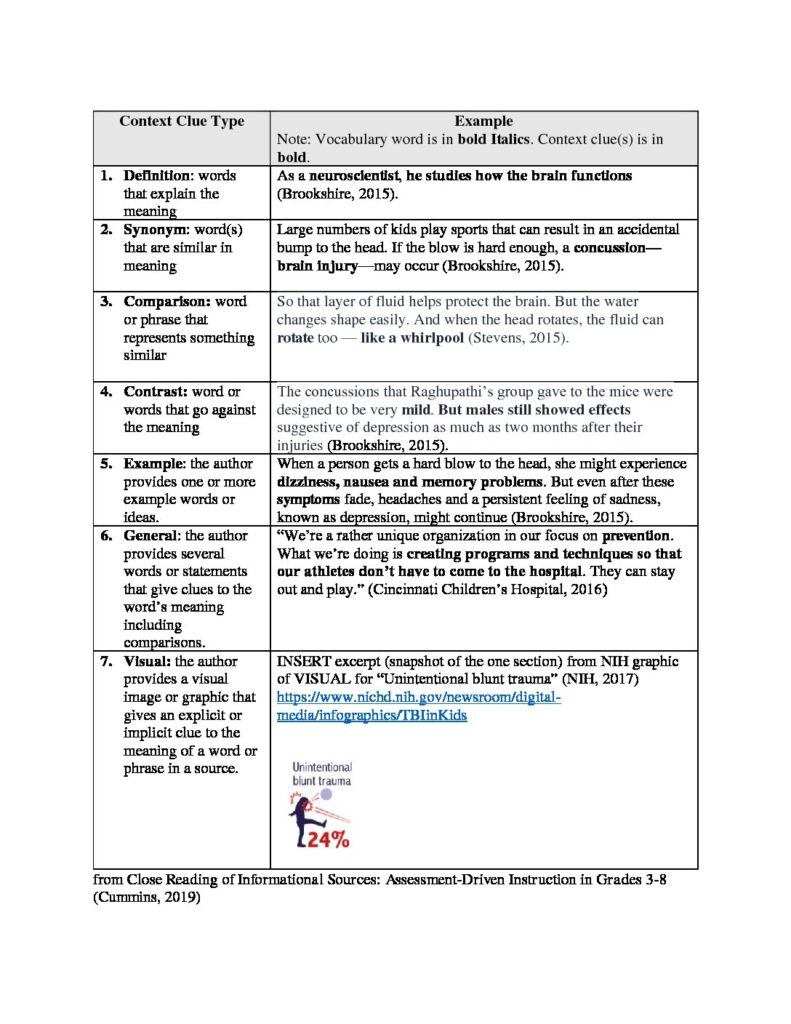
I’m not sure I’d give students this list. Instead I made a bookmark like the one below for a lesson with fourth grade students reading an article from Science News for Students. The article “Males and Females Respond to Head Hits Differently” is about research studies revealing how females and males respond differently to sports-related concussion.
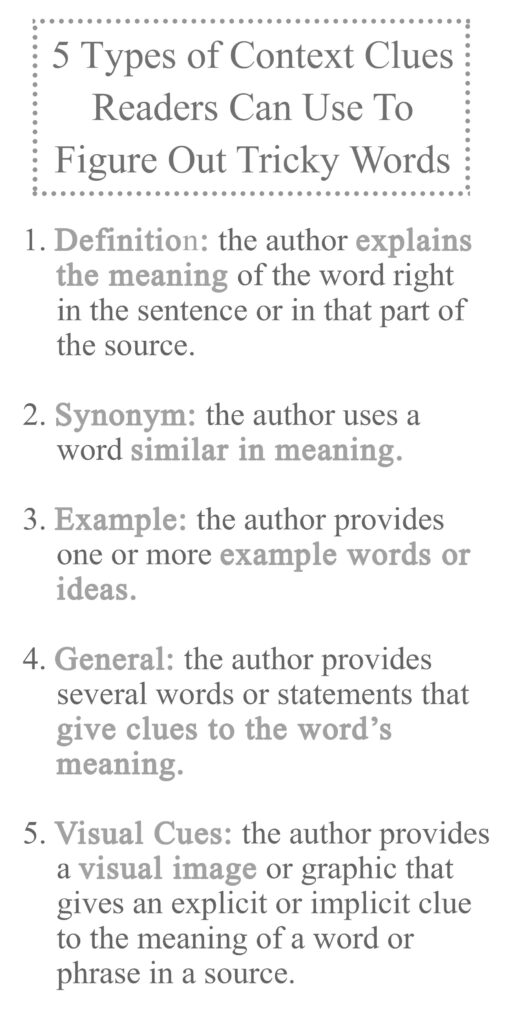
Here’s what my lesson looked like in three phases.
Phase 1: Meet the Source
- Introduced the article (posted on the doc camera) with previewing and predicting. We previewed the title and deck and made relevant predictions – I modeled some and I asked the students to turn and talk with a partner as well.
- Asked the students to determine the author’s main idea as they read individual copies of the article a first time. Conferred with individuals as they read. The first question for each conference was: What did you just learn from the text? This helped me determine where to go next.
- Regrouped and wrote key words (that could help us discuss main idea) from the text on a sticky note on the doc camera–females, males, concussion, depression, sensitivity. See image below. Then I modeled – with a student partner – using these key words to discuss the main idea. As the students summarized and discussed the main idea with a partner, I conferred and continued to add words to the sticky note as needed: reacted, response, differences, investigate.
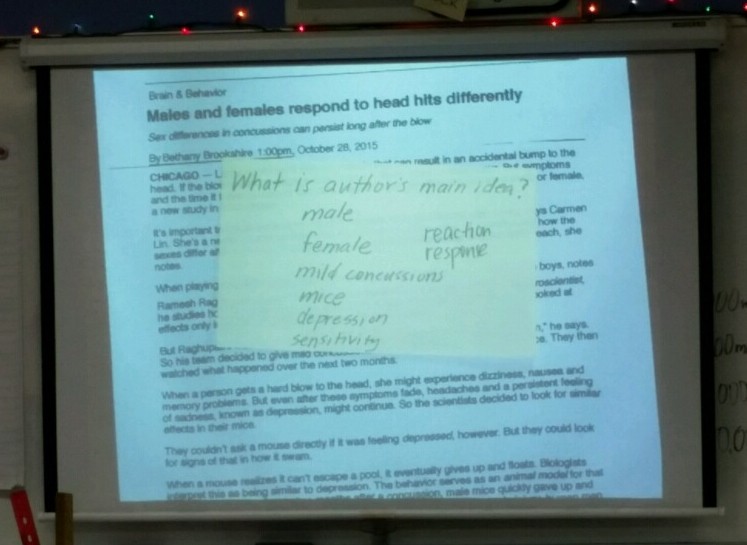
Phase 2: Meet the Strategy of Using Context Clues
- Introduced the types of context clues with bookmark posted on the doc camera.
- Modeled thinking through the meaning of “concussion” and modeled boxing the word, underlining helpful clues, consulting the bookmark to determine what type of clue and then annotating the type of clue on the article.
- Guided students in following a similar routine with a second word — prone.
- Asked the students to identify a third word of their own and attempt to box, underlined, consult bookmark, and annotate. Conferred with individuals. Regrouped once and shared what one student had done as far as thinking and annotating on his copy of the article (placed his copy on the doc camera). Asked students to continue identifying and thinking through additional vocabulary. Below is a scan of my annotated article that I had on the doc camera–these are my notes by the end of the lesson. So I modeled, guided, and then stepped back in at particular points to highlight what students were doing with other words.
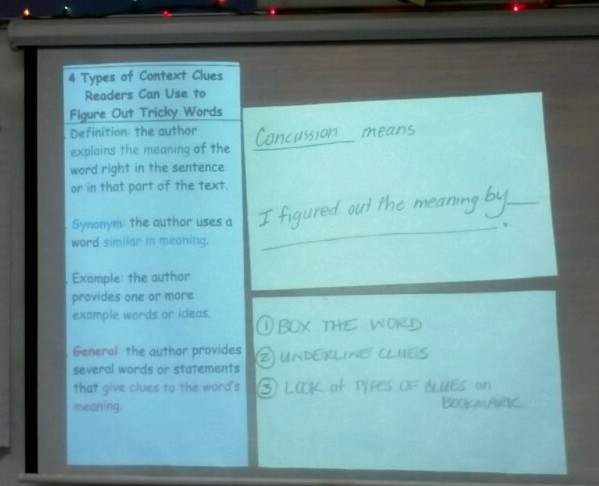
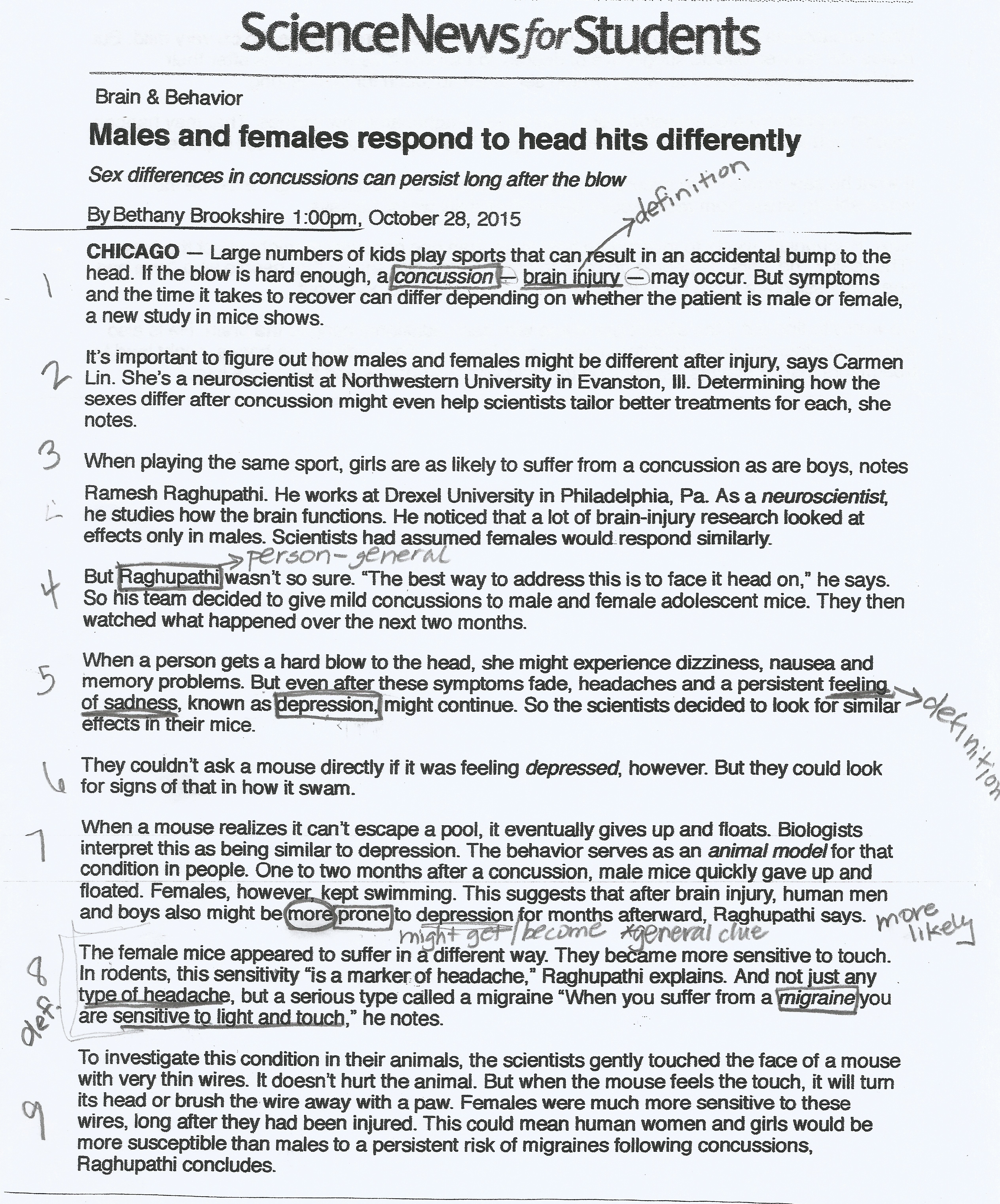
Phase 3: Write a Reflection
I asked the students to write a reflection on this experience. What does it mean to use context clues? Why is this important to do?
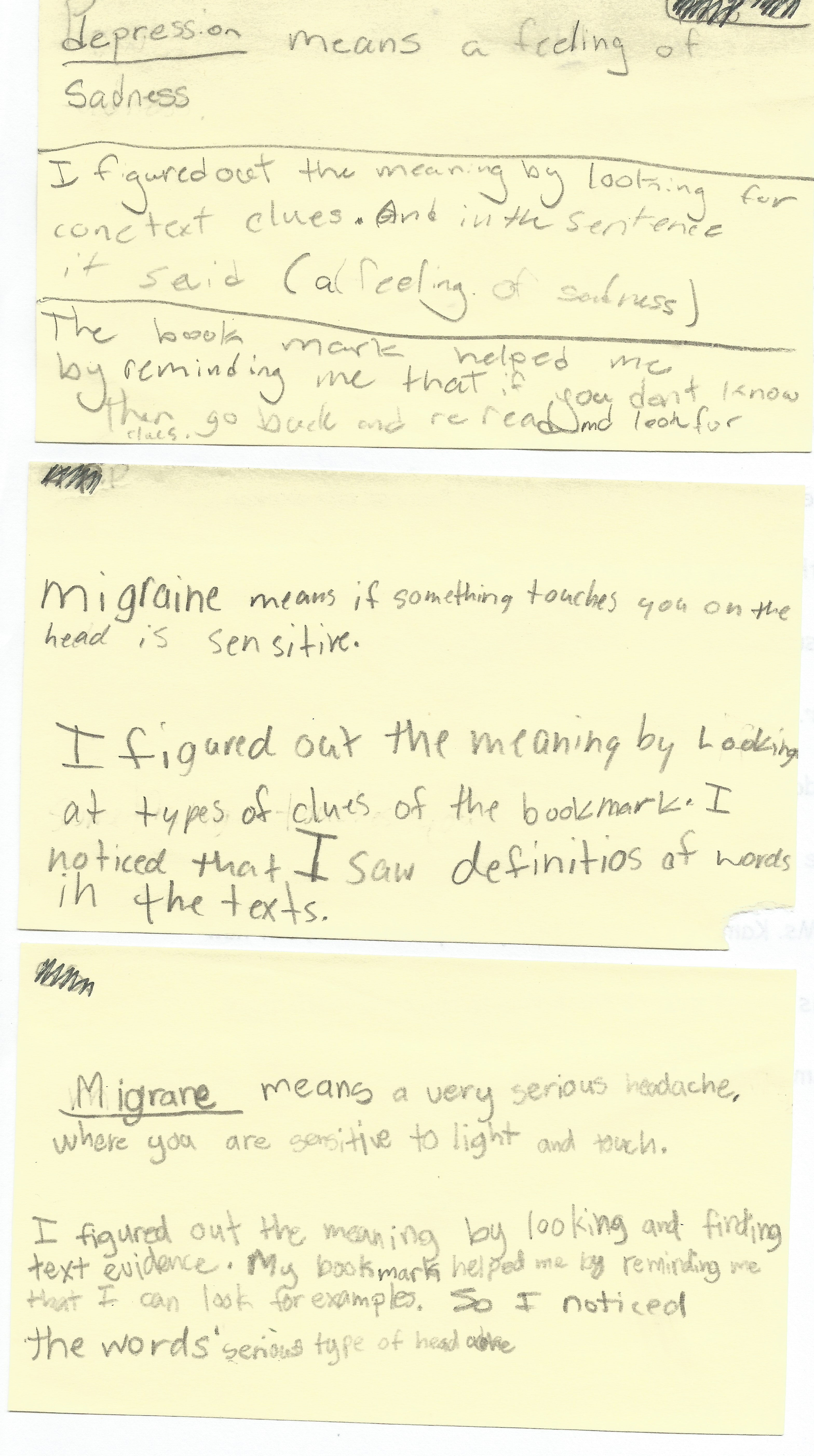
Be Prepared for a Workout!
Many of the students flew–some used the bookmark and some didn’t. Of course, there were some students who did not progress and had little to show when I finally got to them. I really think this is the kind of lesson that should be done in a small group when possible!!!! Either way – the students need more experiences discussing how they figured out the meaning of unfamiliar vocabulary and the types of clues the author used.
In the end, it’s not about whether the student identifies the “right clue.” Our goal is for the students to use the language of the context clues to explain how they made meaning and then to do that without thinking when they come to an unfamiliar word.
Hope this helps.
Sunday
UPDATED 2/10/21
